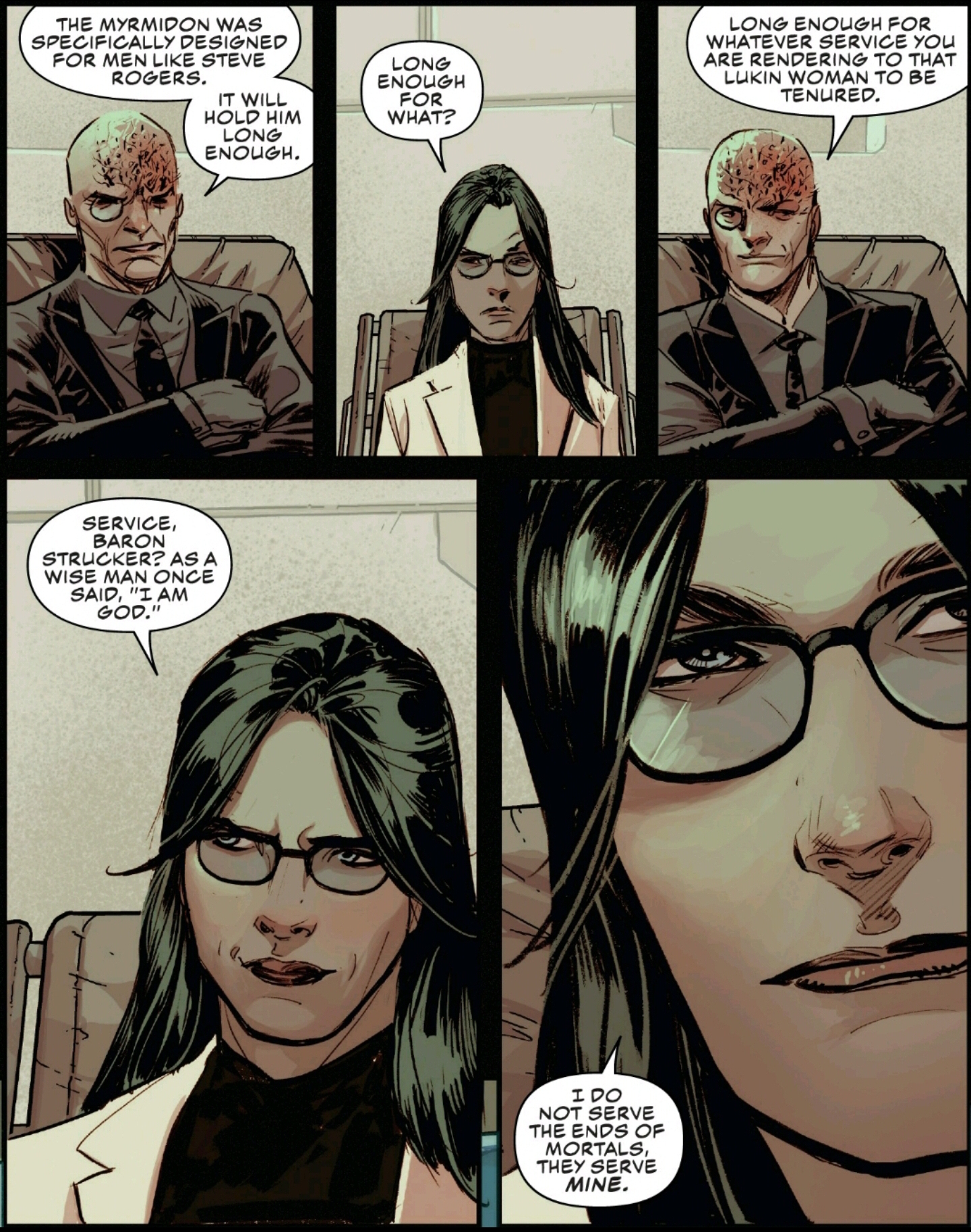Captain America #7 // Review
Ta-Nehisi Coates opens his second arc, “Captain of Nothing,” alongside artist Adam Kubert and color artist Frank Martin, in Captain America #7. Treading familiar ground with the titular character, Coates shows Captain America wanted by the Government, in a move machinated by the flexing Power Elite.
Framed for the apparent murder of General Thaddeus “Thunderbolt” Ross (Former Red Hulk), Steve Rogers is brought in for questioning by Nick Fury Jr. Understanding that those orchestrating his discreditation seek to tarnish the idea of Captain America, Rogers turns himself in, but refuses to bring his shield, given it’s symbolic power. Instead, the shield is bequeathed to Sharon Carter, Rogers’ longtime partner and paramour, who assembles a “new” team of female superheroes to combat the Power Elite, known as The Daughters of Liberty.
While not his strongest issue, Ta-Nehisi Coates nonetheless injects the pages with his signature contemplation on the current state of America, to varying success. A notable highlight is the discussion of power and hypocrisy shared between Bucky and Daredevil villain, The Owl. However, the presentation of Steve’s inner turmoil regarding his continued representation of a country whose government he has repeatedly found himself embattled against, feels like Coates is simply treading metaphorical water, particularly given the concession that such a plot point has been rehashed ad nauseum throughout Captain America’s history (e.g. Nomad, Civil War, etc.).
Heavy emphasis on Cap’s shield being more representative of the mantle than the man wielding it also rings repetitive, though Coates’ execution in the potential passing of the torch does appear askew from the manner seen in past changings of the guard (e.g. Bucky and Sam Wilson’s tenures as Cap). Introduction of The Daughters of Liberty hammers home Coates’ assertion that the ideals (Captain) America is meant to represent transcends the signifier’s creation, given that the real-world Daughters of Liberty organization predates establishment of The United States. How this correlates with (Captain) America proper, beyond the possibility of outright supplantation, however, is unclear.
Iconic artist, Adam Kubert, brings his uniquely rugged, simplicist aesthetic to the title, with a bevy of jagged, bombastic designs. An overall low-action issue, Kubert’s work is primarily showcased in close-ups of talking heads. However, Bucky’s big fight scene at The Bar With No Name displays a frenzied, manic energy that brings hype and anticipation for Kubert’s further work on the title, particularly pages where Cap himself can be seen in combat.
Sharon Carter’s Aeternum Filias, or “Eternal Daughters,” mark an intriguing addition (or retcon) to Te-Nehisi Coates’ Captain America, and potentially to the overall Marvel Universe (Could The Daughters of Liberty somehow be connected to Johnathan Hickman’s S.H.I.E.L.D. history?). However, their mysterious introduction comes at the conclusion of an otherwise unmemorable issue rife with rehashed reflections, and contrived plot rearrangement. Ta-Nehisi Coates’ run has, thus far, been insightful, yet slow-moving; similarly, Captain America #7 sets the scene for the “Captain of Nothing” arc, but does so in an overly methodical manner that only garners interest upon review and reflection.










